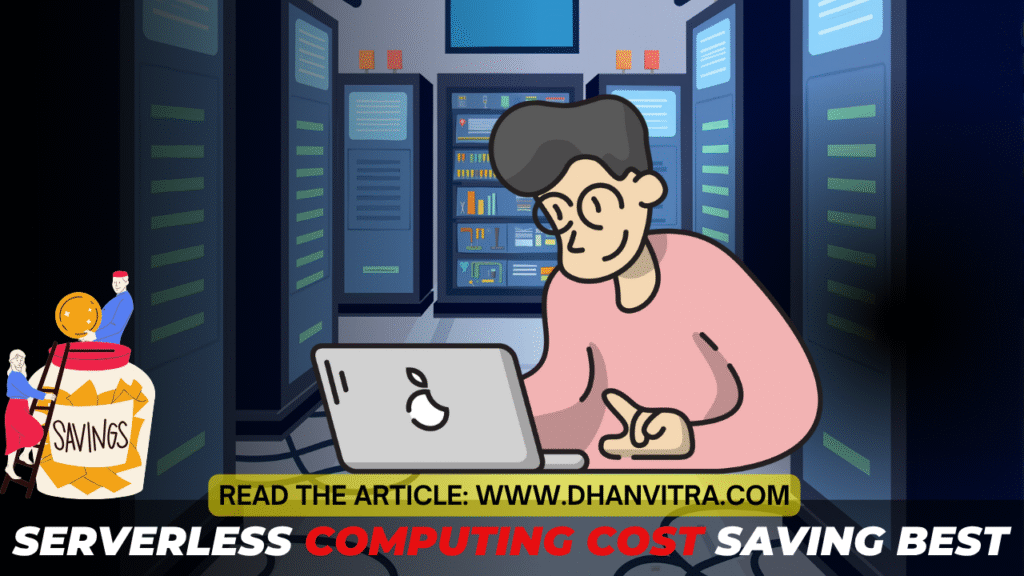
At Dhanvitra, we make complex money topics simple and practical. Whether it’s personal finance, business growth, or tech-driven cost savings, we help you make smarter financial decisions without the jargon.
Today, we’re diving into a topic that’s often overlooked but can quietly drain your budget — How to Reduce Data Egress Costs in Cloud Storage Secrets.
If you’ve ever wondered why your cloud bill suddenly shoots up, the answer might be hiding in those “data transfer” or “egress” charges. These are the costs you pay every time data leaves your cloud — for example, when users download files, when you move data between regions, or when your app pulls information from the cloud.
The good news? You can cut those costs dramatically with the right strategy.
In this article, we’ll break down what data egress really means, why it matters, and — most importantly — how you can reduce those hidden expenses without sacrificing performance or reliability.
No tech jargon, no complicated math — just clear, actionable steps that help you keep more money in your pocket. Let’s get started and uncover the secrets to reducing data egress costs in cloud storage — one simple move at a time.
Table of Contents
How to Reduce Data Egress Costs in Cloud Storage Secrets
Let’s start simple. Imagine you’ve stored a bunch of videos or documents in the cloud. Every time you or someone else downloads or accesses that data from outside the cloud provider’s network, it’s called data egress. And yes—every time that happens, your provider charges you.
Think of it like mobile data. Uploading photos to a cloud is usually cheap (or even free), but downloading them over the internet consumes data—and that’s where the costs sneak in. The same thing happens in the cloud world, except at a much larger scale.
Every cloud provider—whether it’s Amazon Web Services (AWS), Google Cloud, or Microsoft Azure—charges differently for egress. The cost depends on how much data leaves their servers and where it goes. If data moves across regions or between services, the bill climbs even faster.
You might think this doesn’t sound like a big deal. But when you run apps, stream media, or serve global customers, those little transfers add up quickly. That’s why understanding egress is not just technical—it’s financial awareness.
The Hidden Impact of Egress Costs
Egress costs can quietly drain your cloud budget without warning. Most businesses only realize the problem when the monthly invoice lands—and by then, it’s often too late to fix.
For startups or small companies, this can be painful. A few gigabytes of daily downloads might seem harmless, but at the end of the month, it could mean hundreds or even thousands of dollars. Large enterprises feel it too—especially when teams move data between different regions or cloud platforms.
Egress charges also influence how you design your cloud architecture. For instance, if your app stores files in one region but your users are in another, every download triggers cross-region transfer fees. Over time, those costs shape where you decide to host your services and how you deliver content.
And let’s not forget the psychological impact. Cloud storage often feels “limitless,” but egress pricing brings limits back into the picture. It makes developers, data engineers, and finance teams rethink how and where data flows.
In short, egress costs don’t just affect your wallet—they shape your cloud strategy.
Key Factors That Influence Egress Costs
Egress pricing isn’t random. Several factors work behind the scenes, deciding how much you’ll pay each month.
First, geographic region plays a big role. Transferring data within the same region is usually cheaper than sending it halfway across the world. For example, data moving from a U.S. East region to a European one costs much more than data staying local. Cloud providers charge extra for crossing these invisible digital borders.
Next, storage class and access frequency matter. Data stored in “cold” or “archive” tiers is cheaper to keep, but accessing it can trigger higher egress fees. It’s like renting a cheaper storage unit that’s far from home—you save money upfront, but every trip to fetch something costs more.
Then there’s network usage. Data that moves between virtual machines, APIs, or regions within the same cloud can still generate egress costs. Many teams assume that internal traffic is free—but it’s not.
Finally, service integrations can increase costs without you noticing. If you use third-party analytics, monitoring tools, or backup services that pull data out of your main cloud, every data pull counts as egress.
In short, what influences egress costs isn’t just “how much” data you move, but where, how, and how often you move it.
Strategies to Reduce Data Egress Costs
The good news? You can take control. Egress costs may be tricky, but they’re not unmanageable. With a few smart strategies, you can cut them down significantly without hurting performance.
One of the simplest ways is to choose the right cloud region. Always host your data as close as possible to your users or applications. The shorter the digital distance, the lower the egress fee. Think of it like choosing a local courier instead of shipping overseas.
Next, optimize your data architecture. Store and process data in the same region whenever you can. If your app constantly moves files between databases or services, keep those systems within one zone. The fewer cross-region hops, the smaller your bill.
Use Content Delivery Networks (CDNs) to your advantage. CDNs store copies of your content closer to your users. So instead of pulling data directly from your main server every time, users access it from a nearby cache. It’s faster, cheaper, and improves the user experience at the same time.
Another great tactic is data caching and compression. Cache frequently accessed files so they don’t need to be fetched repeatedly. Compress large files before transfer to cut down the total volume of data, leaving your network.
For teams using multiple cloud providers, multi-cloud or hybrid strategies can help. Sometimes, keeping data in one platform and computing in another leads to high egress. Evaluate which provider gives the best deal for your use case and try to minimize cross-platform data flow.
And most importantly, monitor your traffic. Many businesses pay unnecessary egress fees simply because they never check their data transfer logs. Tools like AWS Cost Explorer or Google Cloud Billing Insights show where data is flowing and what it costs you. Once you know the hotspots, you can fix them.
Reducing egress costs isn’t about cutting corners—it’s about being aware. The more visibility you have into your data movement, the better you can control it.
Cloud Provider Tools to Help Manage Egress
When it comes to managing data egress costs, every major cloud provider gives you a set of tools. These tools help you see where your money is going and act before costs spiral out of control. Let’s explore how AWS, Google Cloud, and Microsoft Azure make this possible.
AWS (Amazon Web Services) offers a detailed look into data transfer usage through AWS Cost Explorer and CloudWatch. You can track which services or regions are responsible for high egress. If your data is moving out of S3 buckets frequently, these tools will show it clearly. You can even set up Budgets and Alerts that warn you when your spending crosses a limit. That’s like getting a text when your phone bill is about to go over!
Google Cloud Platform (GCP) takes it a step further with Storage Insights and Cloud Monitoring. These tools display a breakdown of outgoing data, including which projects or users are causing spikes. GCP also offers Cost Anomaly Detection, which uses AI to alert you to any sudden jumps in data transfers. It’s like having a smart assistant keeping an eye on your wallet.
Microsoft Azure gives users Cost Management and Billing, a centralized place to track all expenses, including egress. You can filter reports by resource, location, or even department. Azure’s dashboards make it easy to visualize patterns — for example, if your traffic is mostly cross-region, you’ll know where to optimize.
Each of these platforms gives you visibility, but it’s up to you to act. The goal is to make monitoring a daily habit, not a reaction to a surprise bill.
Advanced Optimization Techniques
If you want to go beyond basic cost control, advanced optimization is the next step. It’s not just about cutting costs; it’s about working smarter.
One smart approach is Data Partitioning. Imagine slicing your data like a pizza — you store the slices (datasets) closer to where they’re used. This reduces how far your data has to travel, cutting down on egress. For example, if your customers are in Europe, keep a copy of the data in an EU region.
Then there’s Edge Computing. Instead of sending every bit of data back to a central cloud, you process it near the user. Think of it like having a mini cloud closer to home. Less distance means lower egress costs and faster response times.
Another powerful option is AI-driven Cost Prediction. Some companies now use machine learning to forecast when and where egress will spike. AI tools study usage patterns and suggest the cheapest ways to move or store data.
Finally, Data Locality Strategies help ensure that your data stays in one region unless absolutely needed elsewhere. Keeping your workloads and data in the same zone prevents cross-region traffic — one of the biggest culprits behind high bills.
When you mix these techniques wisely, you create a balance between cost savings, performance, and reliability.
Common Mistakes That Increase Egress Costs
Even the most experienced teams make mistakes when handling cloud egress. These small slips often lead to big expenses.
The first and most common mistake is ignoring cross-region traffic. Many teams set up applications across multiple regions for redundancy or speed. However, if your app in one region continues to fetch data from another, those transfers are billed as egress. It’s like paying a toll every time your data crosses a bridge!
Another costly error is overusing external APIs. When your application pulls or pushes data frequently to outside services, each call can count as outbound traffic. This is especially true for analytics, logging, or backup systems connected across different clouds.
Some teams also fail to set cost alerts or monitoring rules. Without alerts, you might not even notice when your data usage spikes. By the time you do, the bill is already waiting.
Lastly, not optimizing for content delivery can hurt. If your users access files directly from the storage bucket instead of through a CDN, you’re paying premium transfer rates. It’s like sending each file by express courier instead of using local delivery.
Avoiding these mistakes starts with awareness. Once you understand where the leaks are, fixing them becomes much easier.
Practical Example: Reducing Costs on AWS
Let’s make it real with an example. Imagine you’re running an online learning platform hosted on AWS. Students across the world download videos and notes daily. Suddenly, your monthly bill doubles — and you find that S3 data egress is the main reason.
The first step is to open AWS Cost Explorer. You notice that most of the egress traffic is going to users outside your main region. To fix this, you integrate Amazon CloudFront, a CDN that caches content closer to global users. This instantly reduces the distance data travels and slashes your egress fees.
Next, you check S3 Lifecycle Rules. Many of your old videos are still stored in the “Standard” class, which costs more for access. You move them to S3 Glacier for long-term storage. That means users won’t accidentally trigger high transfer costs for old, rarely viewed files.
Finally, you enable VPC Endpoints to connect AWS services privately. This avoids routing data over the public internet, saving additional egress charges.
After these changes, your egress bill drops by over 40%. Performance improves, and users don’t notice any difference — except faster video loading.
That’s how smart optimization turns a complex problem into a simple fix.
The Future of Cloud Egress Pricing
Cloud pricing is changing fast, and egress costs are finally getting the attention they deserve. For years, companies paid hefty fees every time they moved their data out of the cloud. But now, the tide is turning.
In the coming years, we’ll see more transparent and flexible pricing models. Cloud providers like AWS, Google Cloud, and Azure are realizing that hidden data transfer fees frustrate users. To stay competitive, they’re introducing lower egress rates, free data tiers, and simplified billing systems.
We can also expect greater collaboration between cloud providers and customers. Businesses want cost predictability, and providers want loyalty — so both sides are finding middle ground. Some vendors are even experimenting with “zero egress zones,” where you don’t pay for transferring data between specific services or regions.
Another exciting trend is multi-cloud neutrality. Many organizations are now spreading workloads across multiple clouds. This forces providers to rethink rigid pricing, paving the way for more user-friendly egress models. Imagine being able to move data freely between clouds without paying extra — that’s where we’re heading.
Sustainability will also shape the future of egress pricing. As data transfer consumes energy, providers are exploring eco-friendly discounts. Transferring data through energy-efficient regions could actually save money and reduce your carbon footprint.
In short, the future looks promising. Costs will drop, pricing will be fairer, and businesses will gain more control over how and where they move their data.
Best Practices Checklist
Managing egress costs isn’t about big changes; it’s about smart habits. Start by knowing your data flow — where it’s going, how often it moves, and why. Awareness is your strongest weapon.
Next, keep your data close to your users. Hosting in regions closer to your audience reduces both latency and transfer costs. If your customers are in Asia, don’t store everything in the U.S. — distance matters.
Always use caching and CDNs. They store frequently accessed files locally so you don’t have to pull data from the cloud every time. It’s like keeping snacks on your desk instead of running to the kitchen a hundred times a day.
Set up alerts and budgets in your cloud dashboard. Don’t wait for an unpleasant surprise at the end of the month. Small daily insights help prevent massive bills later.
Finally, review your architecture regularly. The cloud isn’t “set it and forget it.” As your data grows, your usage patterns change. Regular audits can reveal unnecessary data transfers that are quietly costing you money.
When you combine awareness, smart planning, and regular monitoring, egress costs become manageable — even predictable.
Conclusion
Reducing data egress costs isn’t just about saving money — it’s about taking control of your cloud journey. When you understand how data moves, where it goes, and what triggers charges, you can make confident choices.
The cloud will keep evolving, but one thing stays the same: knowledge pays. Whether you’re a startup or a global enterprise, mastering egress strategy gives you an edge. So keep exploring, keep optimizing, and remember — every byte you save adds up.
The next time you look at your cloud bill, you’ll know exactly what you’re paying for — and more importantly, how to cut it down.
FAQs
What is the main cause of high egress costs?
High egress costs usually come from moving large amounts of data out of the cloud. This includes downloading files, syncing backups, or transferring between regions. The more you move, the more you pay.
Can CDNs eliminate egress charges?
No, but they can greatly reduce them. A CDN caches content closer to your users, which minimizes data requests from the main server. That means fewer outbound transfers — and lower egress bills.
Which cloud provider offers the cheapest egress rates?
It depends on your usage and region. Google Cloud and AWS often have competitive rates, but costs vary based on traffic type and data location. Always compare pricing before deciding.
How can startups minimize egress on a small budget?
Startups should focus on local hosting, CDN integration, and cost alerts. These small steps can drastically cut expenses without affecting performance. Also, choose free or discounted tiers offered by cloud providers.
Are there open-source tools to monitor egress data?
Yes! Tools like Prometheus, Grafana, and Cloud Custodian help track and visualize data transfers. They’re free, customizable, and perfect for keeping an eye on your network activity.









